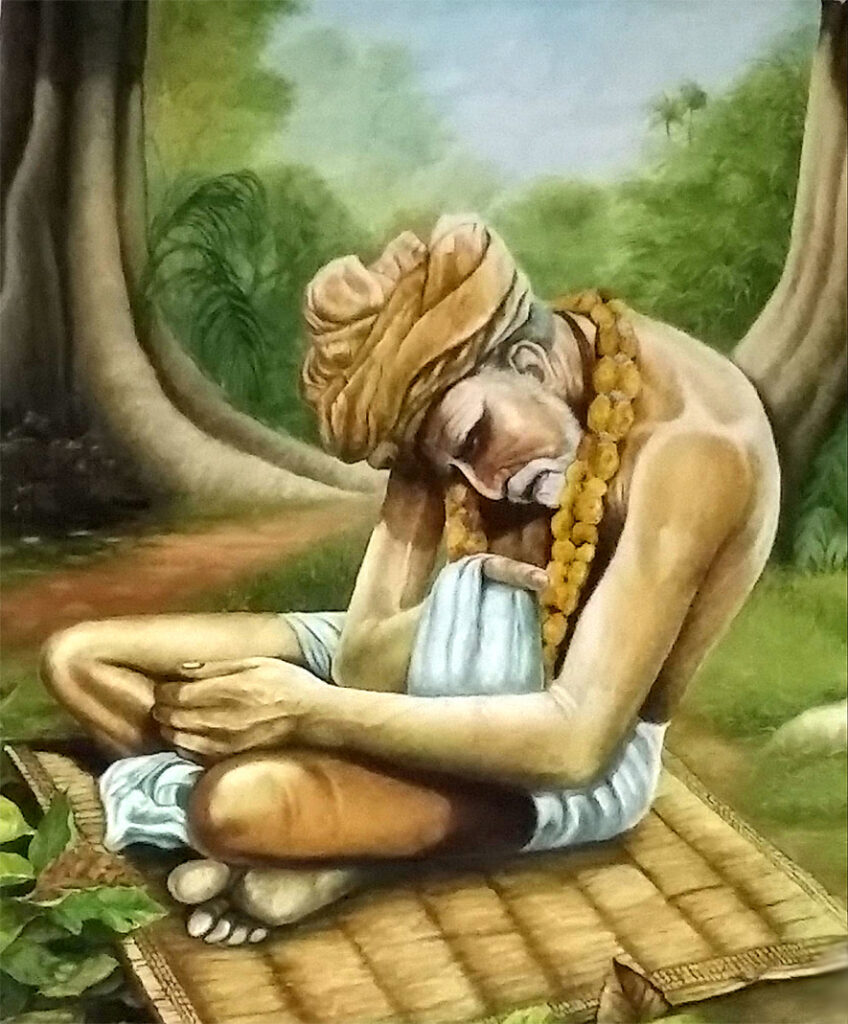
gauravirbhava-bhumes tvam nirdeshta saj-jana-priyah
vaishnava-sarvabhaumah shri-jagannathaya te namah
I offer my respectful obeisances to Jagannath Das Babaji, who is respected by the entire Vaisnava community and who discovered the place where Lord Chaitanya appeared.
Jagannath Das Babaji was born in a small village in the modern-day Tangail district of Bangladesh, which was then part of Bengal. His birth year is sometimes given as 1776, but with differing accounts from several different sources, it’s hard to know the exact year of his birth. According to Gaura-parisada-caritavali, Srila Jagannath Das Babaji lived for 135 years, during which time he constantly chanted the Holy Name and glorified Lord Chaitanya. He left this world in 1895.
Srila Bhaktisiddhanta Sarasvati has described Jagannath Das Babaji’s place in the disciplic succession as follows:
Sri Uddhava Das or Uddhara Das was the follower of the author of the Govinda-bhashya, Baladeva Vidyabhusana (the contemporary in the disciplic line to Visvanatha Cakravati Thakur). He was followed by Uddhava Das, Madhusudana Das and Jagannath Das Babaji, all of whom adopted the lifestyle of the paramahamsa, preaching the path of pure devotion by their example. In the Gaudiya Vaishnava sampradaya, they are the objects of the greatest faith and reverence.
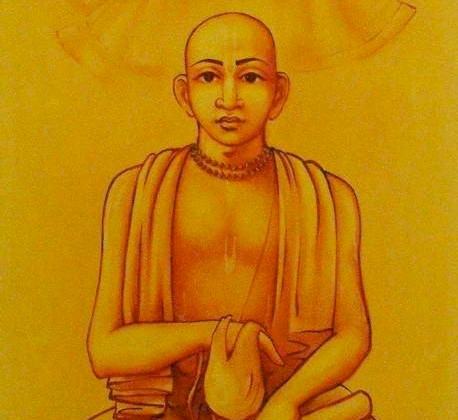
Baladeva Vidyabhusana
According to the Gaudiya-Vaisnava-jivana, the diksa guru (initiating spiritual master) of Jagannath Das Babaji was Jagadananda Goswami of Sringavat, Vrindavan. Jagannath Das Babaji took babaji initiation from Madhusudana Das Babaji, who was initiated by Uddhava Das Babaji, who was initiated by Srila Baladeva Vidyabhusana.
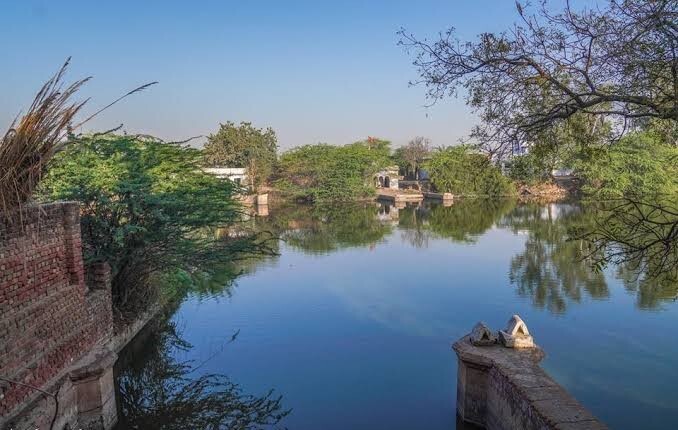
Surya Kunda
Jagannath performed his bhajan (devotional practices) for many years at Surya Kunda in Vrindavan, where he became famous, being recognised as a perfect devotee of the Lord. Surya Kunda is where Radharani would go on the pretext of worshiping Surya, the sun-god. Of course, her real reason for going to this kunda was to meet Sri Krishna. In later life, Jagannath’s practice was to live six months in Sri Navadvipa dhama and six months in Vraja mandala (Vrindavan). Thakur Bhaktivinoda said:
During his time, Sri Jagannath Das Babaji was the most advanced *rasika Vaisnava in Gaura and Vraja mandalas, and Purushottam Kshetra (Jagannatha Puri).
For this reason, Bhaktivinoda Thakur gave Jagannath Das the title Vaisnava Sarvabhauma, the commander-in-chief of the Vaisnavas.
[*A rasika Vaishnava is a devotee on the highest level who has realised their rasa – their spiritual form and eternal service relationship with Krishna].
The Professional Bhagavatam Reciter
While Jagannath Das Babaji was engaged in bhajan in Vrindavan, a professional Bhagavatam reciter from Katwa moved to Vrindavan to make his living, with the object of obtaining fame and fortune. Even though he gave a very learned discourse on the Srimad Bhagavatam, the renounced babaji Vaisnavas showed no interest in listening to him. When he inquired into the reasons for this, Jagannath and the other Vaisnavas told him that any discourse on the Bhagavatam by someone who has an ulterior material motive for speaking cannot be accepted as a true explanation of the Bhagavatam.
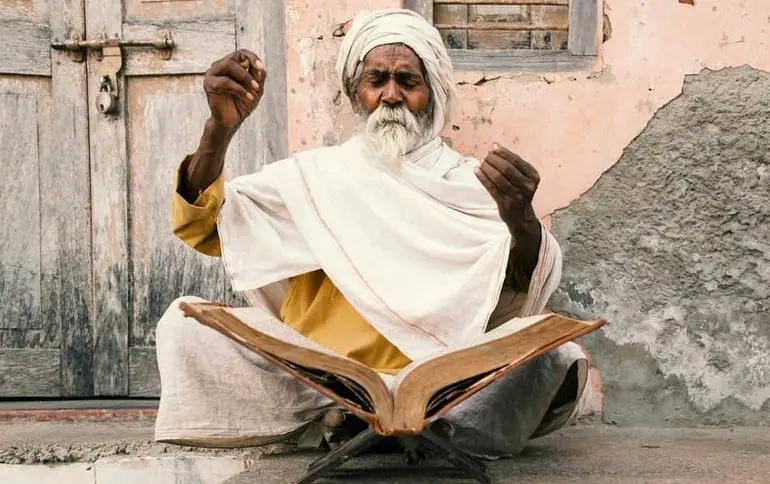
Such a professional speaker is unable to have a beneficial effect on anyone, including himself. He was told that such discourses have a negative effect on the consciousness of the listener, and the Vaisnavas advised him to give up the business of giving Bhagavatam discourses as a means of making his living. By the grace of the Vaisnavas led by Jagannath Das, this materialistically minded Vaisnava was completely transformed. He gave up his false pride in his learning and high birth, and became a wonderful devotee. He attained great humility, and paid his prostrated obeisances to every creature living in the holy abode of Vrindavan.
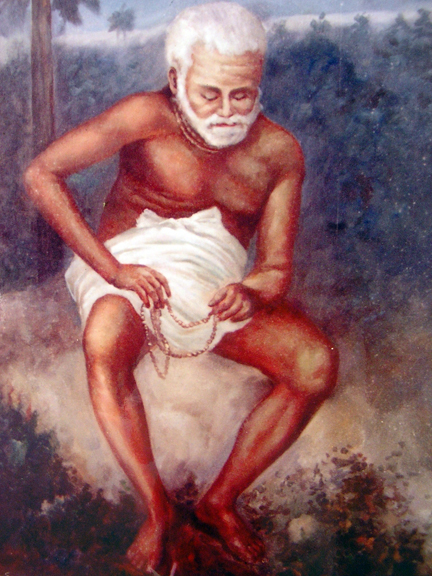
Jagannath Das Babaji lived an incredibly renounced life as an ascetic. He followed a strict diet and observed the yearly Chaturmasya four-month fast. The first month he ate only four bananas in the evening; second month only guavas; third month only whey; fourth month only boiled banana flowers without salt. In his bhajan kutir (place of worship) in Vraja, he would sometimes chant continuously for three days and nights without taking food or sleep. He was fond of chanting loudly in both japa and kirtana. During kirtana he would sing:
Nitai ki nama enechi re! Ki nama enechi rei Ki nama diteche re!
0h Lord Nityananda, what a wonderful name You have brought. 0h Nitai, what a wonderful name You have given.
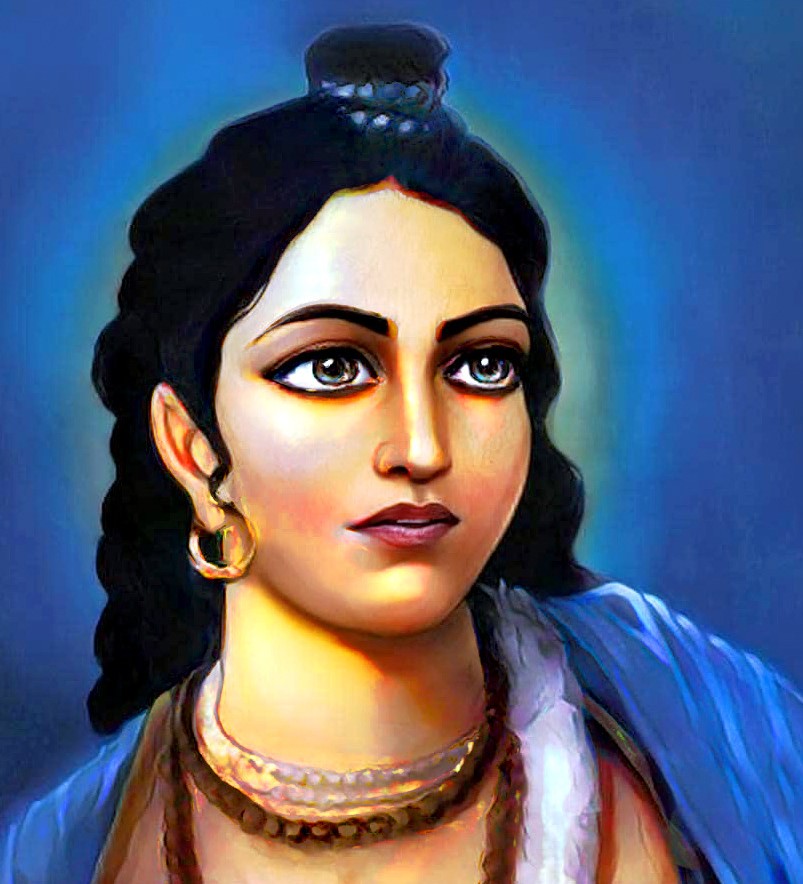
The Vrindavan Street Sweeper
Once Jagannath begged a roti (flat bread) from a Vrindavan street sweeper. Hearing about this, the leading men of Vrindavan said to Jagannath Das Babaji, “Baba, you are the crest jewel of Vraja. It pains us to hear anyone criticizing you. But now everyone is talking against you. They are saying, ‘Baba’s gone mad. If he defies the age old traditions, what will happen to society.’”
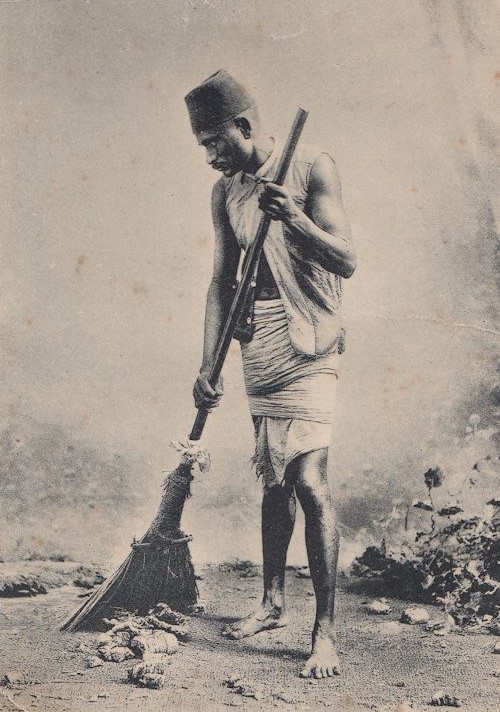
Babaji Maharaj replied:
You are all learned people. Don’t you know the importance of the dust of Vrindavan? It is so surcharged with Krishna-prema that even Lord Brahma desires to become a particle of the dust of Vrindavan. Therefore, isn’t a Vrindavan sweeper who is constantly serving the dust – breathing it, rolling in it, and bathing in it – more pure than anyone else?
Silence filled the air, indicating everyone’s acceptance of Babaji Maharaj’s reply.
The Goat in Vrindavan
Once, the famous landowner Srinath Rai and several members of his family came to Babaji Maharaja. Not recognizing him, they asked if he knew where the famous Siddha Baba (Jagannath) lives. Srila Babaji Maharaj replied: “I don’t know. I live here, but I am an ordinary living being, just like all of you.” Then Rai realized that he was talking with Srila Babaji Maharaj, who did not seek either glory or recognition. They humbly asked him to show them some miracle. To which Babaji answered with displeasure: “I do not know how to perform miracles.”
After these words, he took a stick and in what seemed like irritation, began to hit the ground. The landowner, frightened that he had insulted Jagannath Das Babaji, asked him not to be angry with them for an inappropriate request. Babaji Maharaj replied:
I’m not angry with you, I just drove away a goat that eats the leaves of the Tulasi plant growing near the house of Srila Lokanatha Goswami on Radha Kunda.
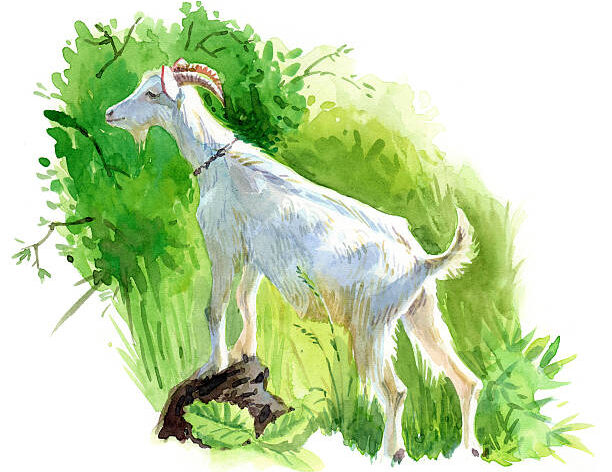
Srinath Rai was very surprised to hear this, and to check the authenticity of his words, he immediately sent a telegram to Radha Kunda. The next day, a return telegram arrived confirming that a goat had climbed into the courtyard of Srila Lokanatha Gosvami’s house and ate his Tulasi plant. Having received a telegram, the Raias again came to Babaji Maharaja and bowed to his feet.
Jagannath Das Babaji Meets Bhaktivinoda Thakur
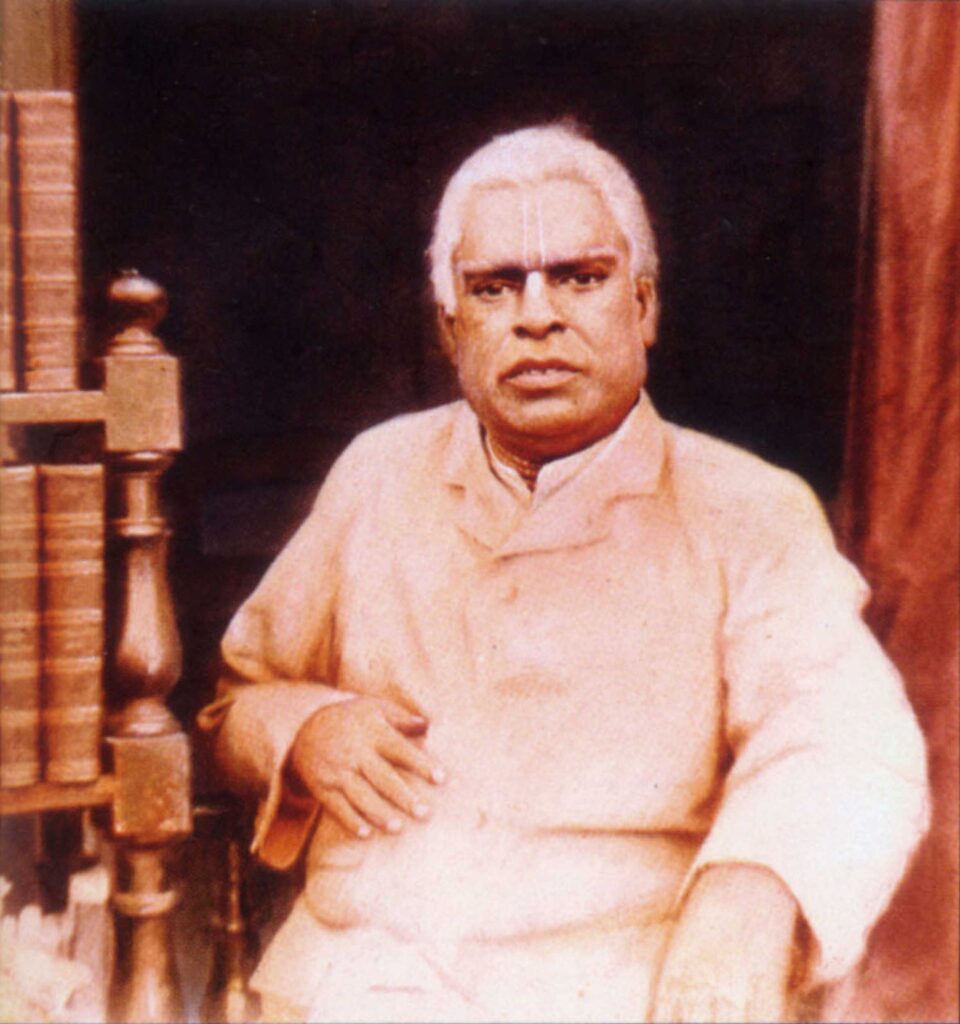
Jagannath Das Babaji met Bhaktivinoda Thakur for the first time in Vrindavan in 1880. While there, the Thakur received many divine instructions on devotional service from Jagannath Das. Their second meeting took place in the village of Amalajoria in Burdwan district in 1891. On this occasion, they spent the entire night of the Ekadasi discussing Krishna-katha. Seeing Bhaktivinoda Thakur’s enthusiasm for preaching the Holy Name of Krishna, Srila Babaji Maharaj was very happy. At this time Jagannath Das Babaji greatly encouraged Bhaktivinoda Thakur to preach the glories of Lord Chaitanya’s name and abode. Srila Bhaktivinoda Thakur gave an account of this eventful night in his Sajjana-toshani magazine as follows:
After spending the whole night in the Ekadasi vigil, at eight in the morning, people from the entire village gathered together to go on the nagara-sankirtan through its streets. Placing the venerable Jagannath Das Babaji Maharajji at the head of the group, they made their way to the Prapannashrama. It is impossible to describe Babaji Maharaj’s ecstatic transformations during this kirtan. Though he is over a hundred years old, he dances like a lion, sometimes singing out the couplet:
nitai ki nama eneche re
nama eneche namer hate,
shraddhara mule nama diteche re
What a divine name Nitai has brought! He has brought the Name to the marketplace of the Name and is selling it for the price of faith!
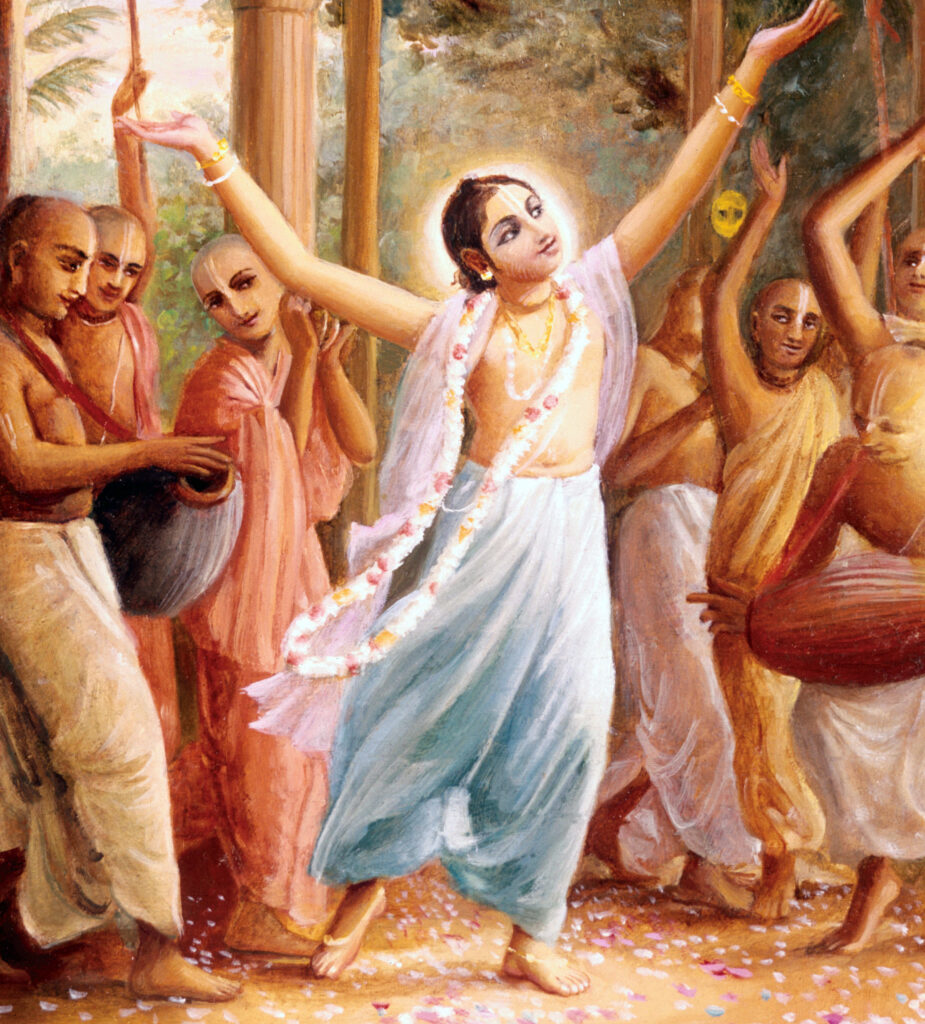
As he sang, he cried and fell to the ground in ecstasy. I then saw something transpire which I had never seen before. All those who were present were affected by his mood: their eyes filled with tears and their hairs stood on end, and even though they could barely sing, they remained absorbed in the kirtan and danced wildly.
At Amalajorha, Srila Bhaktivinoda Thakur established his Prappana-Ashram. (Prapanna is a sanskrit word that means complete surrender and dedication). In his later years, Babaji Maharaja would sometimes go to Calcutta and stay at the house of Bhaktivinoda Thakur, called “Bhakti Bhavana,” on Manikatala Street. Bhaktivinoda was always very eager to invite him to his house for prasada, but Babaji Maharaja was very renounced and would come only occasionally. There, Jagannath met Srila Bhaktisiddhanta Saraswati Thakur, upon whom he showered unlimited affection.
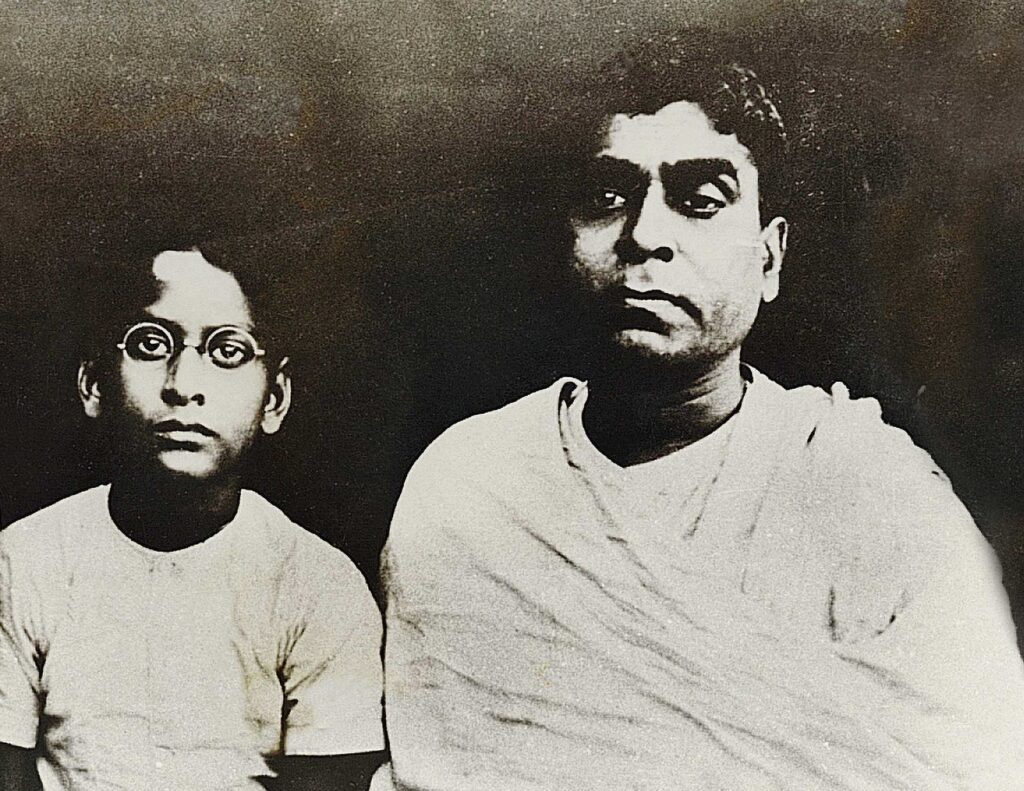
When Srila Bhaktisiddhanta Sarasvati Thakur was twelve years old, he was an expert in the Jyoti-shastras explaining Vedic astrology. When Jagannath learned of his expertise in astrology, he asked him to make an almanac based on the Vaishnava calendar, recording the dates of the appearance and disappearance of important Vaishnava saints and the celebration of important festivals. Later, the Chaitanya Math began publishing the Navadvip Panjika in accordance with Babaji Maharaj’s wishes.
Showbottle Devotees and False Renunciates
Once, some of Jagannath Das Babajis disciples in Vraja approached Bhaktivinoda Thakur. They complained that although they had come to Vraja to live like Jagannath das Babaji Maharaj, fully absorbed in chanting the Holy Names and meditating on Sri Sri Radha-Krishna’s asta-kaliya-lila (meditation on the Lord’s eightfold daily pastimes), Babaji Maharaja had refused to instruct them in such esoteric topics and had instead engaged them in cultivating Tulasi plants, flowers, and vegetables to offer to the Lord. So these disciples requested Bhaktivinoda Thakur to appeal to their Guru Maharaja to instruct them in the esoteric practices of Krishna consciousness.
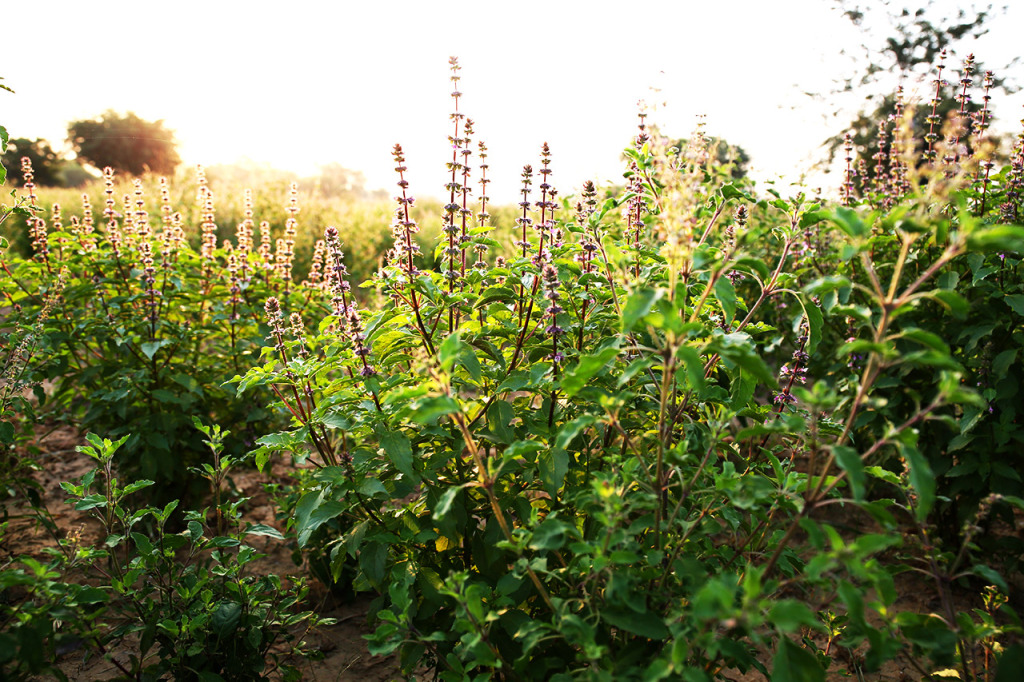
Srila Bhaktivinoda Thakur told them:
Actually, your Gurudeva’s instructions are right for you. Because you still have anarthas (material desires and unwanted habits), for you to try to sit and do nirjana-bhajana (solitary worship) and practice asta-kaliya-lila smarana would be artificial, and you would just become degraded. So you should follow your Gurudeva’s instructions with full faith and work hard in Krishna’s service. Then, in time, you may be able to chant the Holy Names purely.
True bhajananandi devotees like Jagannath Das Babaji, the Six Goswamis of Vrindavan and Gaurkishora Das Babaji are very rare and cannot be imitated by those who are not rasika Vaisnavas – those who are loving Krishna perfectly and serving him in their spiritual forms. Those who imitate the great babajis and pretend to be in such an advanced state that they can perform severe austerities and sit all day in a secluded place chanting the Lord’s holy names, invariably fall down and destroy their spiritual lives, and mislead others in the process. Bhaktisiddhanta Sarasvati wrote:
Innumerable men accepted the babaji dress and pretended to be exalted devotees of the Lord. However, my master, Srila Gaurakisora, never accepted a devious mode of life, as the sincerity in his activities were self-evident. His affectionate nature was matchless, and whenever he would obtain opulent offerings, he remained fixed in his renunciation.
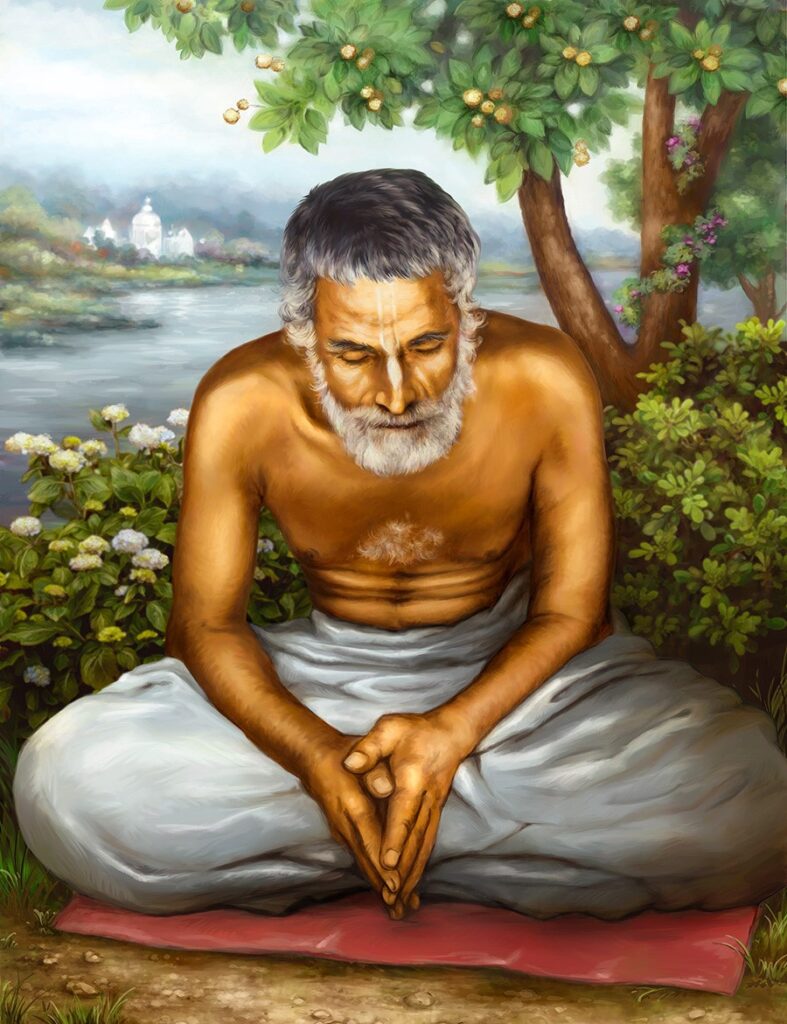
While Srila Gaurakisora was residing at a dharmsala in the village of Kuliya, Srila Bhaktisiddhanta Sarasvati came and asked him many questions regarding the residents of Vrindavan and the various devotees who were performing solitary worship there. Srila Bhaktisiddhanta especially asked about the famous solitary worshippers who were considered to be perfectly realized souls in the estimation of the general public. Srila Gaurakisora laughed again and again at his query, and said:
They are all impostors!
One babaji residing at Kusuma Sarovara was renowned as a great bhajananandi. In addition, he even had one or two disciples who were reputed to be perfectly realized devotees. But Srila Gaurakisora did not even slightly recognize them as genuine babajis. After some time, the so-called exalted soul in Kusuma Sarovara became afflicted with leprosy of the throat and died after extreme suffering. He lived in the holy dhama, but his behavior was offensive toward Srila Gaurakisora because he lived a life of hypocrisy for wealth and fame, while his mind was bent on sense enjoyment.
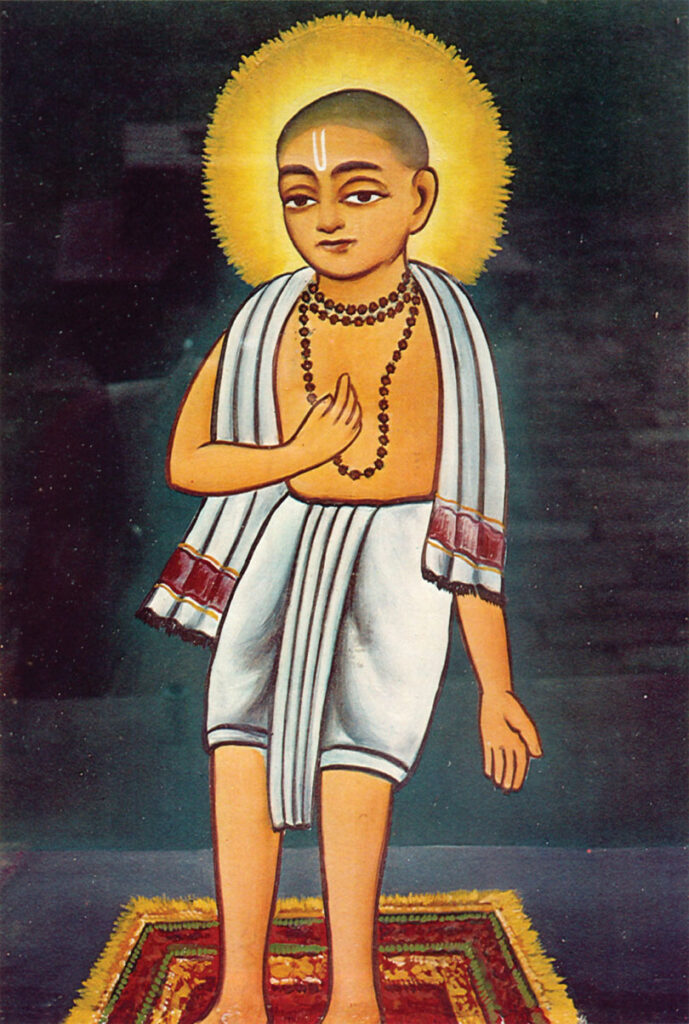
Lord Chaitanya’s instructions to the young Raghunath Das warn of the danger of becoming a false renunciate. As a young man, Raghunath Das met Lord Chaitanya and became mad with ecstatic love for the Lord. He tried desperately to go to Jagannath Puri to be with Lord Chaitanya, but his wealthy father had a number of servants keep the young man prisoner at home, at times even binding him to prevent him from leaving. When Lord Chaitanya went to Santipur, Raghunath was able to spend some time with Lord Gauranga, but he was closely guarded by his father’s watchmen, and was unable to permanently accompany the Lord. Understanding Raghunath’s heart, Lord Chaitanya instructed him with the following words:
Be patient and return home. Don’t be a crazy fellow. By and by you will be able to cross the ocean of material existence. You should not make yourself a showbottle devotee and become a false renunciant. For the time being, enjoy the material world in a befitting way and do not become attached to it.
[Caitanya-caritamrta Madhya 16:237-238]
In his purport to verse 16:238, Srila Bhaktivedanta Swami says:
The word markata-vairagya, indicating false renunciation, is very important in this verse (“markata” in sanskrit means monkey). Srila Bhaktisiddhanta Sarasvati Ṭhakur, in commenting on this word, points out that monkeys make an external show of renunciation by not accepting clothing and by living naked in the forest. In this way they consider themselves renunciants, but actually they are very busy enjoying sense gratification with dozens of female monkeys. Such renunciation is called markata-vairagya – the renunciation of a monkey. One cannot be really renounced until one actually becomes disgusted with material activity and sees it as a stumbling block to spiritual advancement. …

… The word markata-vairagya is used by Sri Chaitanya Mahaprabhu to indicate so-called Vaisnavas who dress themselves in loincloths trying to imitate Srila Rupa Gosvami. Such people carry a beadbag and chant, but at heart they are always thinking about getting women and money. Unknown to others, these markata-vairagyas maintain women but externally present themselves as renunciants. Sri Chaitanya Mahaprabhu was very much opposed to these markata-vairagyas, or pseudo-Vaisnavas.
[Excerpts from Caitanya-caritamrta Madhya 16:238 purport]
In a similar vein, Srila Bhaktivedanta Swami has said:
… For self-realization, one can live a controlled life, as prescribed in the sastras, and continue carrying out his business without attachment, and in that way make progress. Such a sincere person who follows this method is far better situated than the false pretender who adopts showbottle spiritualism to cheat the innocent public. A sincere sweeper in the street is far better than the charlatan meditator who meditates only for the sake of making a living.
[Excerpt from purport to Bhagavad-gita 7:3]
Jagannath Das Babaji in Navadvipa
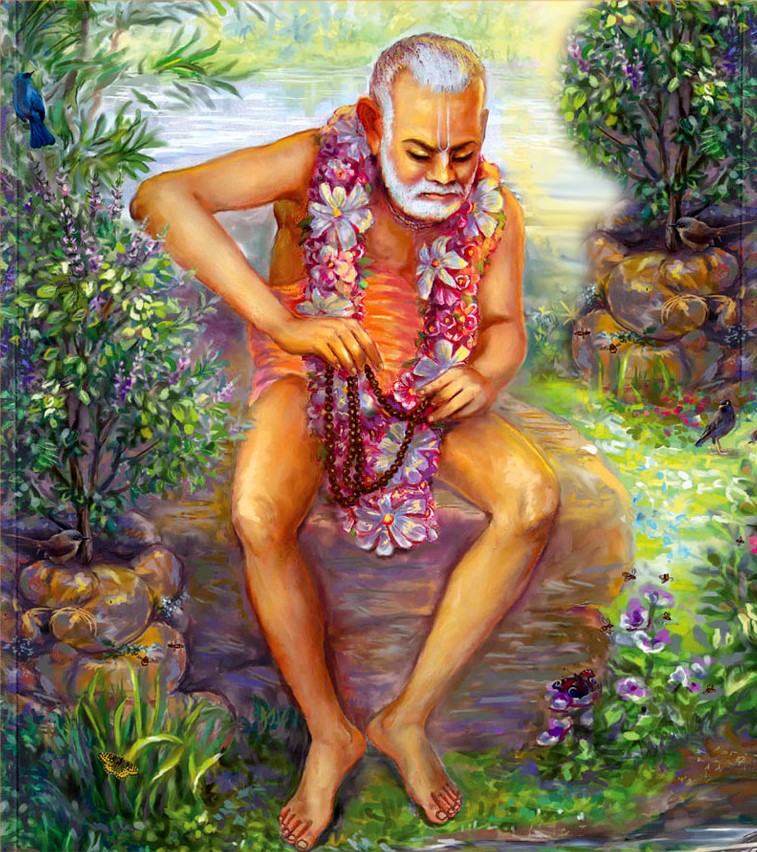
Jagannath Das Babaji Maharaj spent a long time performing his bhajan in the Vraja Mandala (Vrindavan region), but in 1880 he moved to Bengal, where he stayed for a while in the village of Amalajoda, in the district of Burdwan. There Bhaktivinoda Thakur met with him, receiving many valuable spiritual instructions. When Babaji Maharaja decided to move to Navadvipa, his servant Bihari asked him where they would stop and offered as an option a large ashram, which everyone called “Bada Akhara”. But Maharaja replied:
No, we will not stop at any ashram. We will live under a tree.
And for some time, they really were located under a tree. However, later a devotee named Sri Madhava Datta bought land near that tree and presented it to Babaji, and a year later Srila Bhaktivinoda Thakur built two small huts for him there. Then Rajarishi Sri Vanamali Rai, a well-known landowner, built three more huts there and surrounded them with a wall, and one rich woman of old age made sure that a well was dug there. Babaji lived in that place for thirty-two years.
Sri Bihari Lal Das
Sri Bihari Lal Das was born in a cowherd family in Vrindavan. Bihari Das was physically very strong, and he served Srila Jagannath das Babaji Maharaja for approximately 40 years. Sri Bihari Das was not highly qualified in reading and writing from the perspective of worldly people. However, by the mercy of his spiritual master, he became very learned spiritually, and through his faithful service to Jagannath Das he was constantly absorbed in devotional service to Krishna. In his guru Maharaj’s later years, he would place Srila Babaji Maharaj in a wicker basket upon his head, and carry him from one place to another. Because of his great strength, he could travel eight to ten miles in this way.
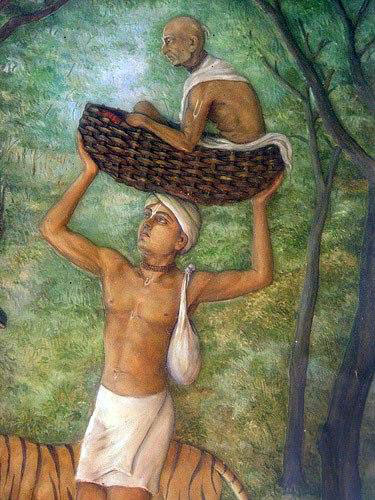
Bihari’s Disease
Once Bihari became seriously ill with a strong fever. He was delirious and constantly lost consciousness. A doctor, who was called from Calcutta, said that the disease had gone too far and there was no hope for a cure. He said that Bihari would die by morning. Jagannath Das Babaji sat near his beloved servant, put some offered Tulasi in Bihari’s mouth, and began to chant the maha-mantra. After half an hour, Bihari was completely healthy. He got out of bed and went to the kitchen to prepare prasadam, because he knew that Babaji Maharaj, who had fasted all the days of his illness, would only eat what was prepared by him.
Feeding the Cows and Dogs of Navadvipa
Eventually, Jagannath Das Babaji Maharaj moved to Mayapur, where he lived by the banks of the Ganges, fully absorbed in chanting the Holy Names. He had the greatest reverence for the sacred land of Navadvipa. Although he was so renounced and so absorbed in Krishna consciousness, as his reputation spread, gentlemen would come to him and give him donations for the service of Krishna. His servant Bihari das would keep all these donations in an old burlap bag. At this time, Babaji Maharaj was nearly blind.
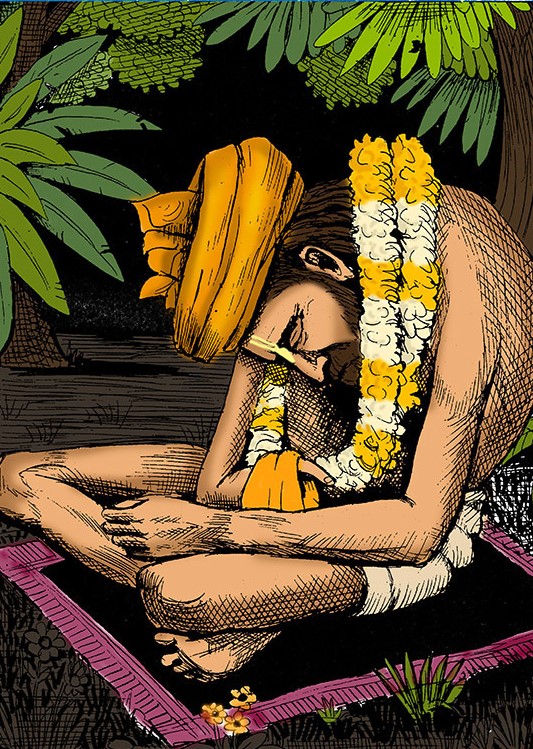
One day, Babaji Maharaja said, “Bihari! How many rupees have I got?” Bihari das had put some rupees aside for some service he had planned to render Babaji Maharaj. When asked by Jagannath Das Babaji about how many rupees were on hand, Bihari placed some rupees in his hand, but kept twelve rupees aside. Even though his eyesight was failing, however, Babaji Maharaj detected the discrepancy. “Bihari!” he said, “Why have you kept twelve rupees aside? Give me all the rupees!” Smiling at this fun, Bihari surrendered the remaining coins to his guru.
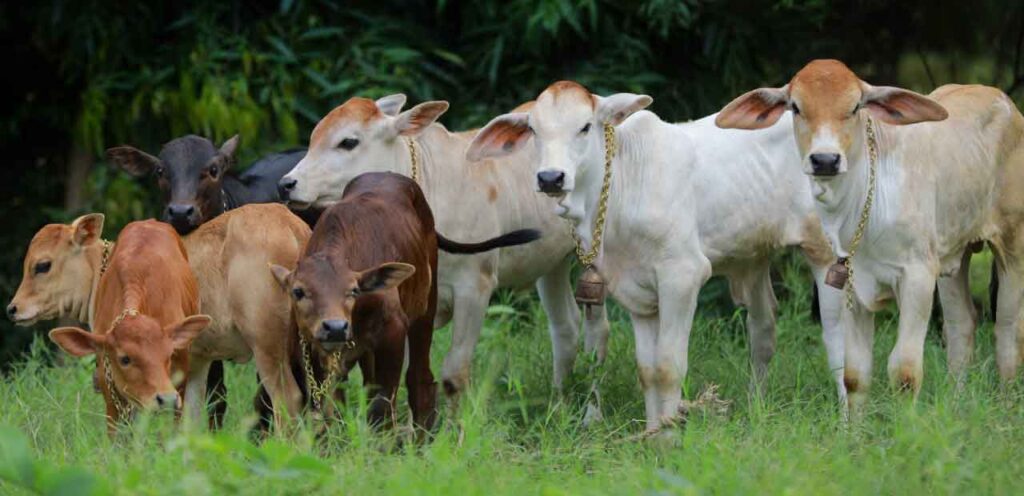
Babaji Maharaja then asked Bihari Das to take all of the rupees and purchase a large pot of rasagullas (sweetballs). All the devotees were surprised at this, because Jagannath Das Babaji was so renounced and lived so simply. He would eat just the most simple rice and dal. Bihari brought the sweets, and Jagannath Das Babaji offered them to his Deities and then distributed them to the cows and dogs in the dhama (the sacred abode of Navadvipa). When asked whether it would be better to feed local babajis with these sweets, Jagannath Das Babaji replied: “I do not want to feed these sahajis. During the day, they pretend to be detached renunciates, and at night they engage in illicit sex-life.” He said the creatures of the dhama were elevated souls and worthy of service.
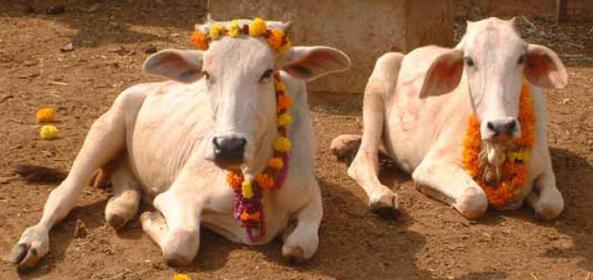
Jagannath and the Puppies
Jagannath Das Babaji would eat prasadam from a large brass plate which someone had given as a donation. At one time while in Navadvip, a dog gave birth to a litter of puppies near where Jagannath was living. Babaji Maharaj would not accept prasad until he had shared his food with these ten newborn puppies. He would wait until they came, and he would count them with his hands, as in his old age, Babaji Maharaj’s eyelids drooped over his eyes and prevented him from seeing. So he would count them with his hands, and only after they had begun to eat, would he also partake. Once, his servant Bihari tried to shoo them off, and Jagannath refused to eat unless the puppies were there to share his prasadam. He said:
They are puppies of the dhama. They are not ordinary living entities. I will not eat until they come back to share the maha-prasadam from my plate.
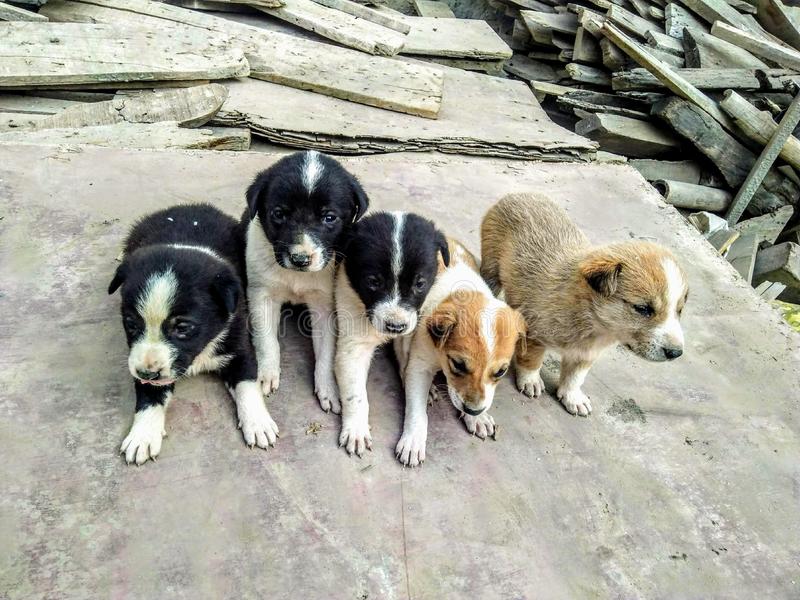
He had great faith and affection for the dhama, but he had far less affection for some Mayavadi impersonalists who also lived there. He used to say, “Let the dogs come in for darshan, but the impersonalists, kick them out!” (Darshan is the opportunity to see and be in the presence of a holy person or the Deity form).
The Sting of One Rupee
Once, as Sri Bihari Das was carrying Srila Jagannath Das Babaji Maharaj on a pathway, a devotee gave Babaji Maharaj one rupee and Babaji Maharaj gave it to Bihari Das to keep. Two or three miles ahead, Srila Babaji Maharaj suddenly told Bihari Das to return it. After arriving at his dwelling, he called that devotee and gave him back the rupee, saying:
Brother, you keep your rupee, I heard that you have many rupees. I don’t know how you can tolerate the biting sting of so many rupees, I am not able to tolerate the sting of even one rupee.
When he was over one-hundred-and-twenty years of age, Jagannath’s body appeared bent like a semi-circle. Bihari Das would carry Babaji Maharaj in the wicker basket and take him to kirtans, and whenever there was loud chanting, Jagannath Das Babaji would jump out of his basket and leap four feet into the air. In great ecstasy, he would begin to sing and dance. He performed vigorous bhajan despite his extreme physical limitations. Even though Babaji Maharaj was very aged, his sight was still good, but his eyelids drooped, covering his eyes, and he had to lift them in order to see. Sometimes, standing on either side, two disciples would lift his droopy eyelids so he could offer Tulasi manjaris to his Deity of Sri Giriraja Govardhana (Krishna as the lifter of Govardhan Hill).
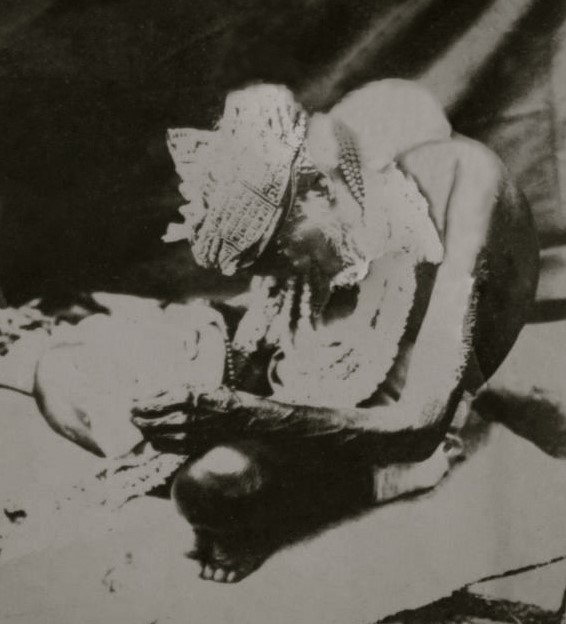
The only photo of Srila Jagannath Babaji Maharaja, taken on the roof of Bhaktivinoda’s Bhakti Bhavan.
Discovering Lord Chaitanya’s Birth Site
In 1887, Bhaktivinoda Thakur wanted to leave his government service as a Magistrate under the British Raj. He desired to go to Vrndavan and do bhajan, meditating on the banks of the Yamuna river until the end of his life. One night, being aware of the Thakur’s thoughts, Sri Chaitanya Mahaprabhu Himself appeared to Bhaktivinoda Thakur in a dream and told him:
You will certainly go to Vrndavan, but first there is some service you must perform in Navadvipa, so what will you do about that?
The Lord then disappeared and Thakur Bhaktivinoda awoke, and thereafter applied for a government transfer to Krishnanagar, which is nearby to Navadvipa. The Thakur tried very hard to get a transfer to the holy dhama of Lord Chaitanya. Finally, after much endeavor and requests to be relieved of his official duties, Bhaktivinoda Thakur was able to arrange a mutual exchange with the Deputy Magistrate of Krishnanagar, and in December of 1887, he finally went to Krishnanagar to execute the mission the Lord had given him.
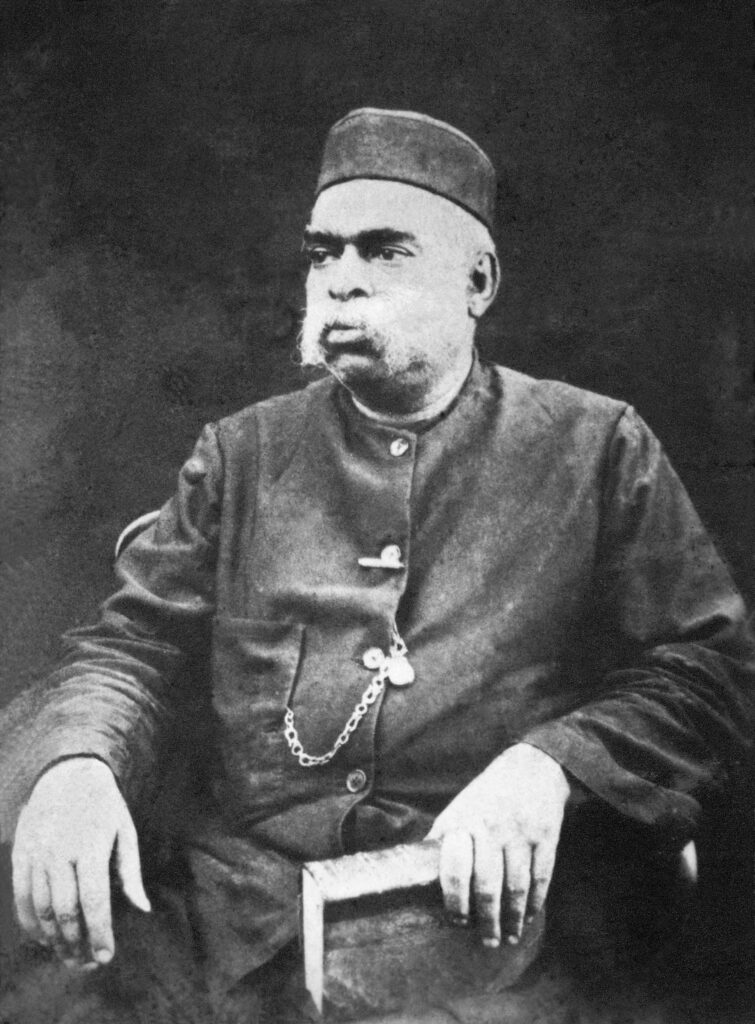
During the many changes in the course of flow of the mighty Ganges River, some parts of the sacred dhama of Navadvipa had changed. The Ganges had revealed old and lost places and reclaimed new ones. To his surprise, Bhaktivinoda Thakur discovered that the modern day city called “Navadvipa” was not more than 100 years old, and therefore wasn’t the Navadvipa of Sri Chaitanya.
While stationed in Krishnanagar, Bhaktivinoda Thakur would regularly visit the present day Navadvipa, searching for the birthplace of Sri Chaitanya Mahaprabhu. One Saturday evening, the Thakur was sitting on the roof of the Rani Dharmasala in Navadvipa with his third son, Kamal Prasad, and a friend who was a clerk. (A dharmasala – “a house with fire” – is the name given to a place where pilgrims can rest while on a journey). Around 10pm on a dark and cloudy night, Thakur Bhaktivinoda had a wondrous experience. He later wrote:
Across the Ganga (Ganges), in the northern direction, I saw a large mansion flooded with light. When I asked Kamal (about this), he confirmed that he had seen it also. When I asked the clerk, he said, “I didn’t see anything.” I was utterly amazed by that. When I looked carefully at that area in the morning from the roof of Rani’s house, I saw a tal (palm) tree located there.
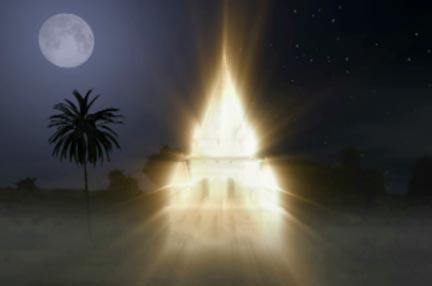
He inquired about the place, and learned that right next to that place was the ruins of an old fort and a large pond, remnants of the kingdom of King Ballal Sen, from which the town got its name of Ballaldighi. Aside from that, however, there was nothing of importance in that area. The following Saturday, the Thakur went to Ballaldighi, where again at night, he had a wonderful vision. The next day, he wandered around the site, and the elderly locals told him that this was indeed the Janmastan (birthplace) of Sri Krishna Chaitanya Mahaprabhu, called the Yoga-pitha – the place where the Lord connects Himself, or descends, to this earth. They pointed out the Tulasi plants growing in abundance, none of them ever having been planted.
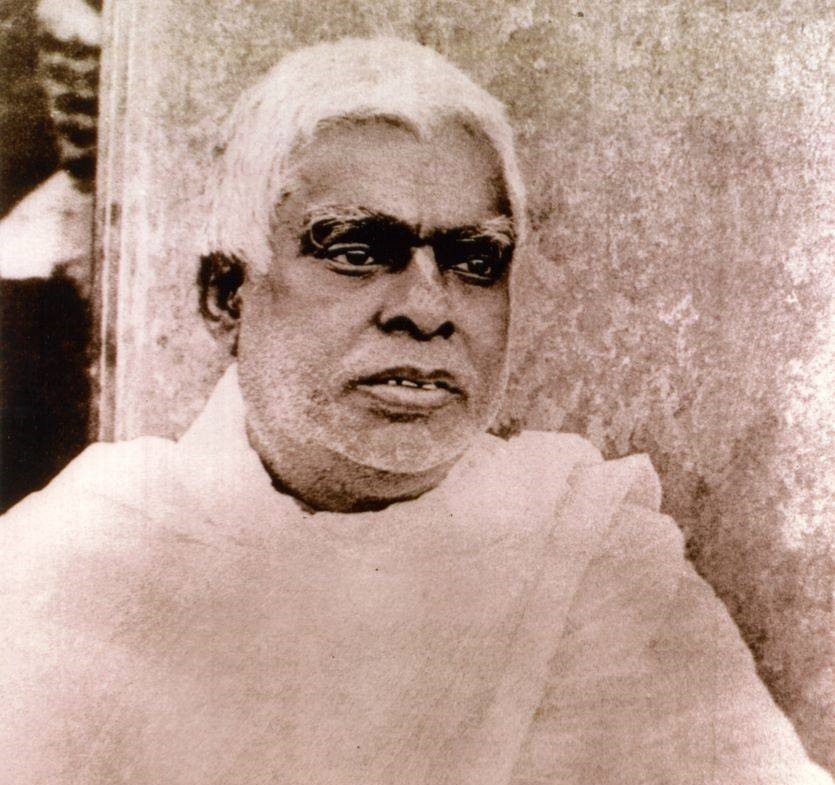
Thakur Bhaktivinoda then began extensive research using old manuscripts such as Chaitanya Bhagavata, Bhakti Ratnakara, Narahari Sarakar Thakur’s Navadvipa-parikrama-paddhati, along with very old government maps of the district. It was interesting to find that on one map in particular, from the late eighteenth century, the name Sri Mayapura was found on the map, which was later to be known as Ballaldighi. While reading Bhakti Ratnakara, he found the following verse, which confirmed his discovery:
navadvipa madhye mayapura name sthan
yathaya janmilen gauracandra bhagavan
In the center of Navadvipa there is a place called Mayapura. At this place the Supreme Lord, Gauracandra, took His birth.
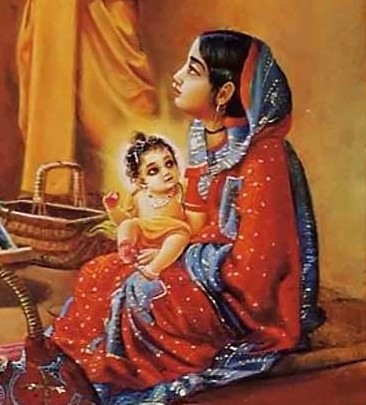
In order to confirm it for sure, Thakur Bhaktivinoda asked Srila Jagannatha Das Babaji, who was the head of the Gaudiya Vaisnava community, to come to the site. Babaji Maharaja, being over one-hundred-and-twenty years old at that time was so weak, he had to be carried everywhere in his basket, and upon arriving at the place Bhaktivinoda Thakur discovered to be the birth place of Lord Chaitanya, Babaji Maharaj literally jumped up into the air in ecstasy and cried:
Ei to Nimai-janma-bhumi! – This is indeed the birth place of Lord Nimai!
Babaji Maharaj got out of the basket and began to dance madly, singing the names of Gaurahari. Everyone was amazed to see the old babaji dance in this way. Through his divine vision, Babaji Maharaj pointed out the site of Mahaprabhu’s birth and then later the site of the breaking of the mridanga drum by the Kazi. This was the ultimate confirmation, and proved beyond a shadow of a doubt that this was indeed the original birthplace of Sri Krishna Chaitanya Mahaprabhu.

Therefore, the result of much academic research was spiritually confirmed, and the place of Lord Chaitanya’s birth was thus rediscovered. This monumental event took place toward the beginning of 1888, and it was a landmark event in Gaudiya Vaisnava history. Thereafter, Bhaktivinoda Thakur began extensive research and rediscovered other pastime places of the Lord, and produced the book Sri Navadvipa Dhama Mahatmya which was published in 1890.
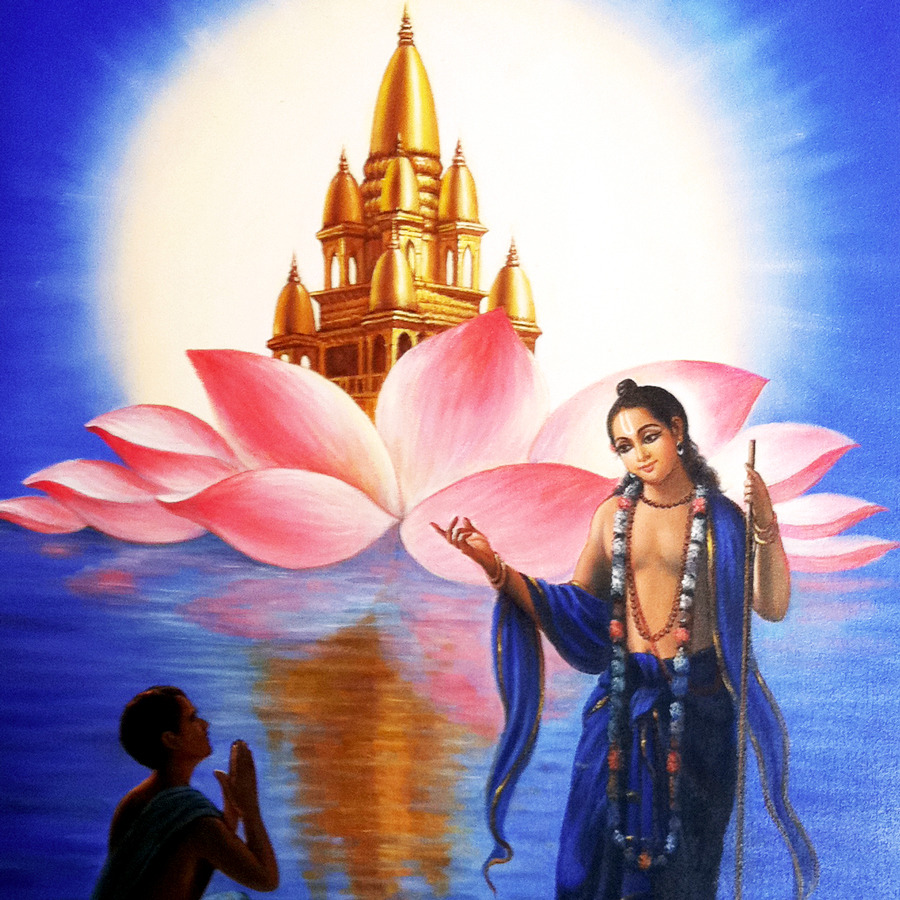
Revealing the glories of Antardvipa, in chapter five of Navadvipa Dhama Mahatmaya, Srila Thakur Bhaktivinoda quotes Lord Nityananda saying this to Srila Jiva Goswami:
Listen to My words. Navadvipa extends over sixteen krosas. Within the sixteen krosas of Navadvipa, which are non-different from Vrindavan, there are nine islands, which form an eight-petaled lotus floating on the water. In the middle of the eight islands, or petals, lies Antardvipa. And within Antardvipa, lies the very central point, Mayapur. The eternal pastimes of Lord Chaitanya take place within Yogapith and the circle of Mayapur, the circumference of which measures three and a half miles and the diameter measures just over one mile. Because the Pancha-tattva are seated at the Yogapith, it is the most glorious of all places.
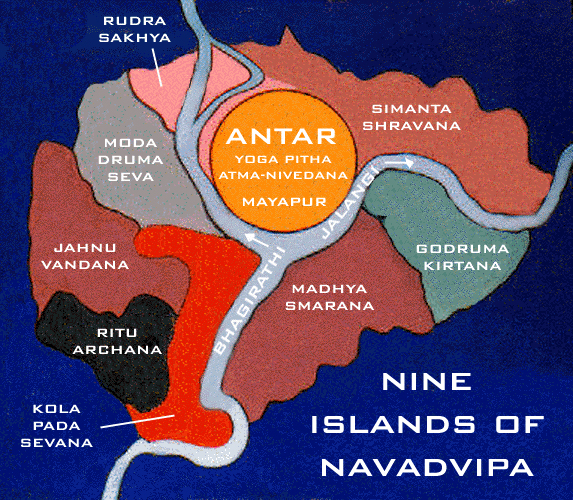
Very soon, by the desire of the Lord, this will be nearly hidden under the waters of the Ganges. Then later, by the powerful desire of the Lord, the dhama will again be revealed and shine effulgently. The eternal dhama is never really lost but is temporarily covered, and then again it appears to our eyes. My worshipable Lord eternally resides at Mayapur, situated on the east bank of the Ganges. Although in the eyes of common people, Vishvambhar (Lord Chaitanya) took sannyas and left Navadvipa to go elsewhere, actually My Gauranga never gives up Mayapur or Navadvipa. The devotees can perceive His daily lila. You, Jiva, will also see Gauranga dancing.
In those days, there was a large kadamba tree at the Janmasthan in Mayapur. Babaji Maharaj came and danced under this tree. Sri Gaurkishora das Babaji used to sit under that tree chanting the holy name in deep trance. Jagannath das Babaji had stayed a long time in a place named Bhajana-kutira in Koladvipa. Srila Bhaktivinoda Thakur had a concrete veranda built for this cottage. Babaji Maharaj’s samadhi tomb is situated there.
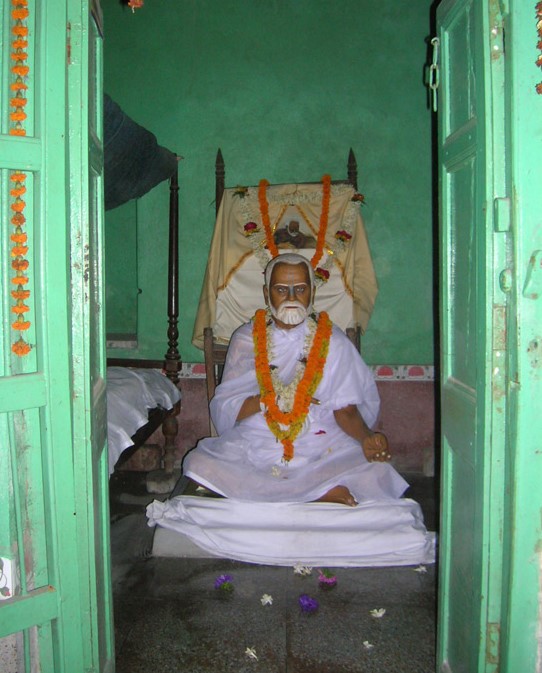
When approaching the end of his sojourn in this world, Babaji Maharaj became hunched and tiny looking. Nevertheless, when he danced in kirtan, it is said that he would look six-feet-tall, a magnificent specimen of humanity, with long arms reaching down to his knees. He would sometimes jump high into the air when absorbed in the ecstatic mood of kirtan. He was fond of chanting loudly in both japa and kirtana. After chanting almost the whole night, the next morning he would offer 1,108 dandavats to the Deities. He was always enthusiastic to serve the Vaisnavas.
Babaji Maharaj’s Disappearance
Jagannath Das Babaji spent his last days in the areas of Vrindavan and Navadvipa, where he performed bhajan and japa in worship to Radha and Krishna. His devotion to Chaitanya Mahaprabhu and instructions on Vaishnava theology to Bhaktivinoda Thakur and Gaurkisora Das Babaji render him an essential link in the Gaudiya Vaishnava guru-parampara. Jagannath Das Babaji was a great bhajananandi – a babaji who lived a solitary life of austere worship. But he also engaged in preaching activities, serving as an acharya and teaching by both his instructions and his example. As siksha guru, he taught and inspired the great Bhaktivinoda Thakur.
According to Gaudiya-vaisnava-jivana, at a very advanced age he decided to travel to Navadvip from Radhakunda. Many Vaisnavas went to him to inquire why he was leaving Vraja dhama at such an advanced age. In a mood of transcendental remorse and great humility he replied:
You can all stay here in Vraja dhama because you are all pure Vaisnavas. I am very offensive, and therefore it is better for me to stay at Navadvipa. Their Lordships Sri Sri Gaura-Nitai do not count one’s offenses, as They have appeared to liberate all offenders. But here in Vraja dhama offenses are counted and reactions thereto are strictly enforced.
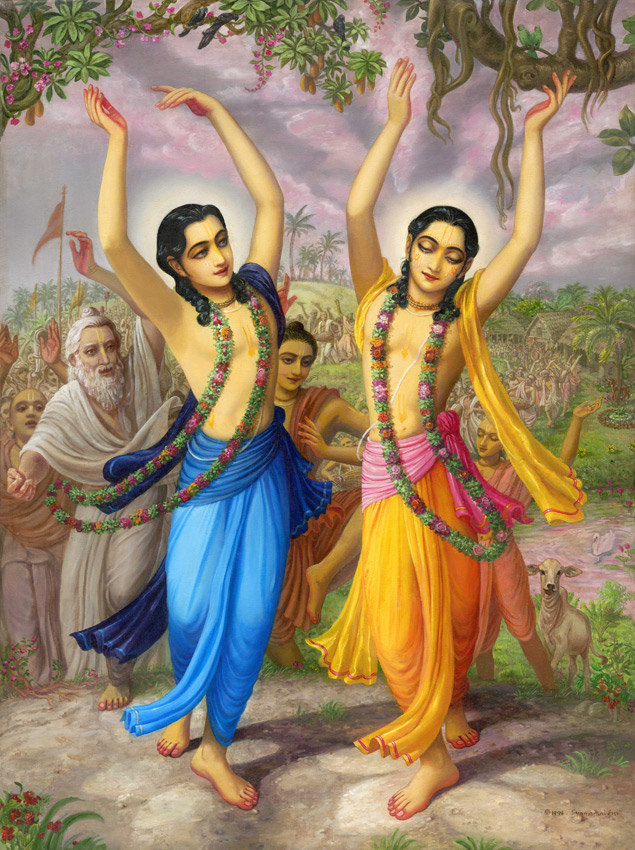
This was his last journey to Navadvipa dhama. A few months after his arrival, on the first day of the new moon in the month of Phalguna, a fortnight before the anniversary of Lord Chaitanya’s appearance, he entered the Lord’s eternal pastimes. Jagannath Das Babaji’s disappearance took place on February 25, 1895. Srila Bhaktivinoda Thakur wrote the following about this in Sajjana-toshani (22:2):
At ten o’clock in the morning, in the Bhajana-kutira in Koladvipa in Navadvipa town, the old general of the Vaisnavas went to his eternal abode. The Siddha Babaji went to the spiritual world, but left this world in darkness. We will no longer be able to see his ecstatic dancing in kirtan with these mundane eyes. May he bestow his blessings on us from his place in the eternal home.
There is a very nice song glorifying Jagannath Das Babaji, which appears in the book Sri Chaitanya: His Life and Associates by Srila Bhakti Ballabh Tirtha Maharaj. Its English translation reads:
Sri-Srila-Jagannathashtakam
I venerate great Jagannath, the best of the Vaishnavas, the foremost of the followers of Srila Rupa Goswami, the king of Gauranga’s dear devotees, who takes pleasure in remembering Radhika and Madhava.
I venerate great Jagannath, the best of the Vaishnavas, who was the dearest associate of the most merciful resident of Surya Kunda, Sri Madhusudana Das Babaji.
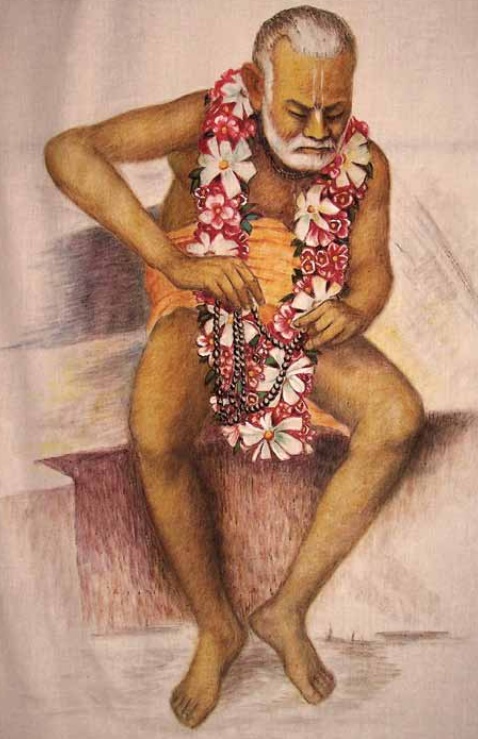
I venerate great Jagannath, the best of the Vaishnavas, who stood out from the rest of the devotees of Sri Dham Vrindavan just like the moon amongst the stars. He was the protector of the association of Vaishnavas who are uniquely dedicated to the chanting of the Holy Name.
I venerate great Jagannath, the best of the Vaishnavas, aglow with devotion to Hari combined with knowledge and renunciation, a veritable thunderbolt to those who are wicked and pretenders and ever affectionate to the faithful.
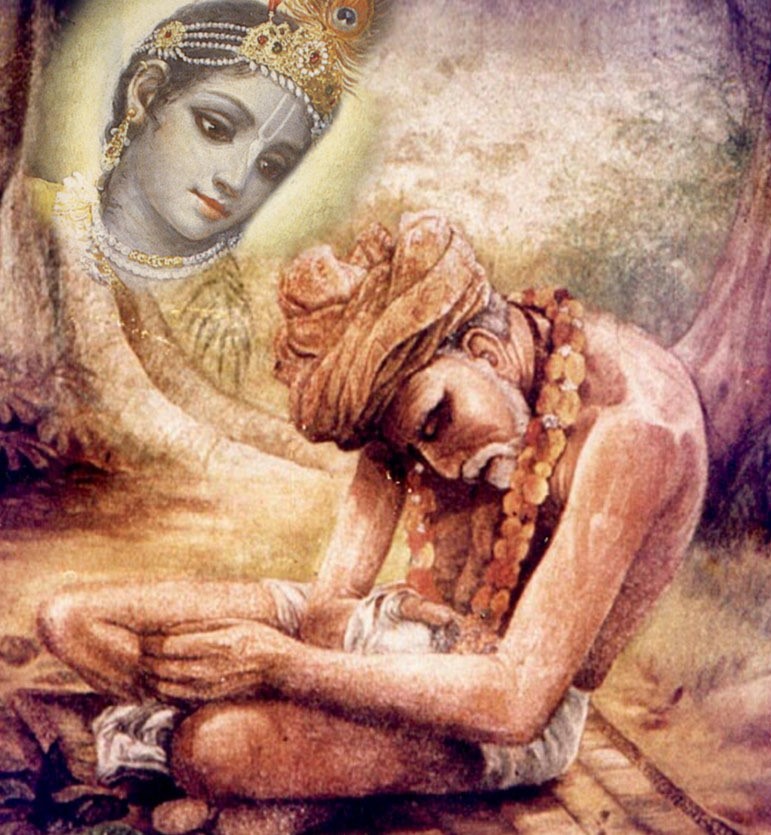
I venerate great Jagannath, the best of the Vaishnavas, who was directed by Gauranga himself to point out the place where he appeared on this earth. He is worshipped by even the gods as the sovereign of the Vaishnavas on this earth.
I venerate great Jagannath, the best of the Vaishnavas, who infused the devoted Bhaktivinoda Thakur with all of his own potency, and through him unleashed the flood of Harinama throughout the universe.
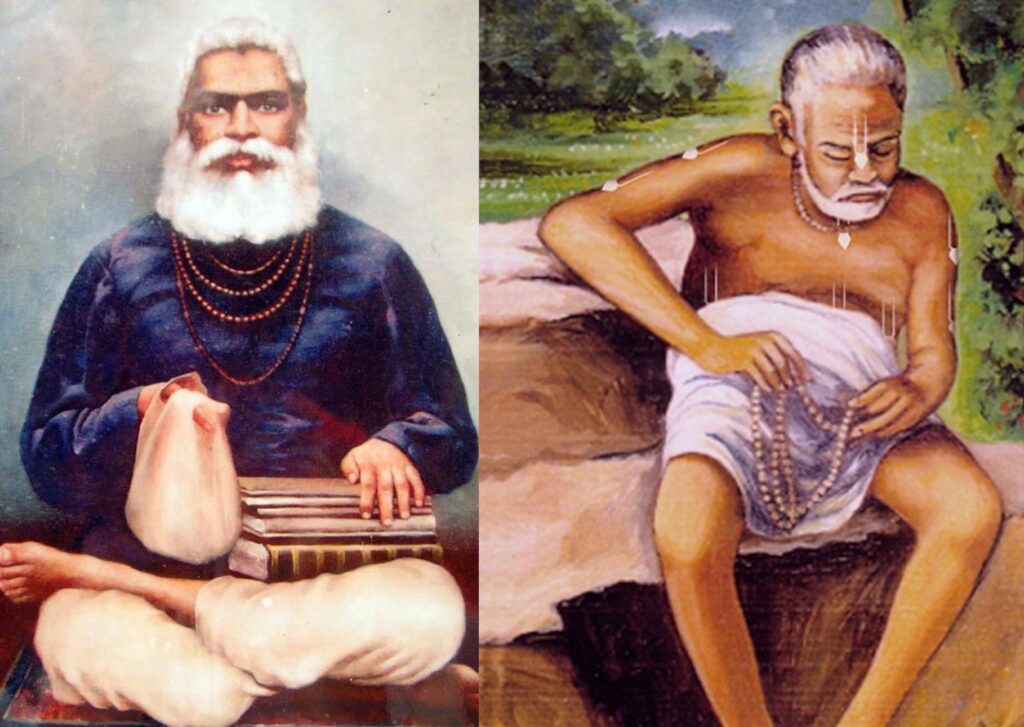
I venerate great Jagannath, the best of the Vaishnavas, always immersed in the ocean of sacred rapture and engaged in forcefully preaching the Holy Names and the Lord’s abode. He danced ecstatically in the Yoga-pitha at Mayapur.
I venerate great Jagannath, the best of the Vaishnavas, who is totally attached to the Holy Dhama of Mayapur, who is joyful from the vision of Gauranga, whose eyes flow with tears from the chanting of the Holy Names.
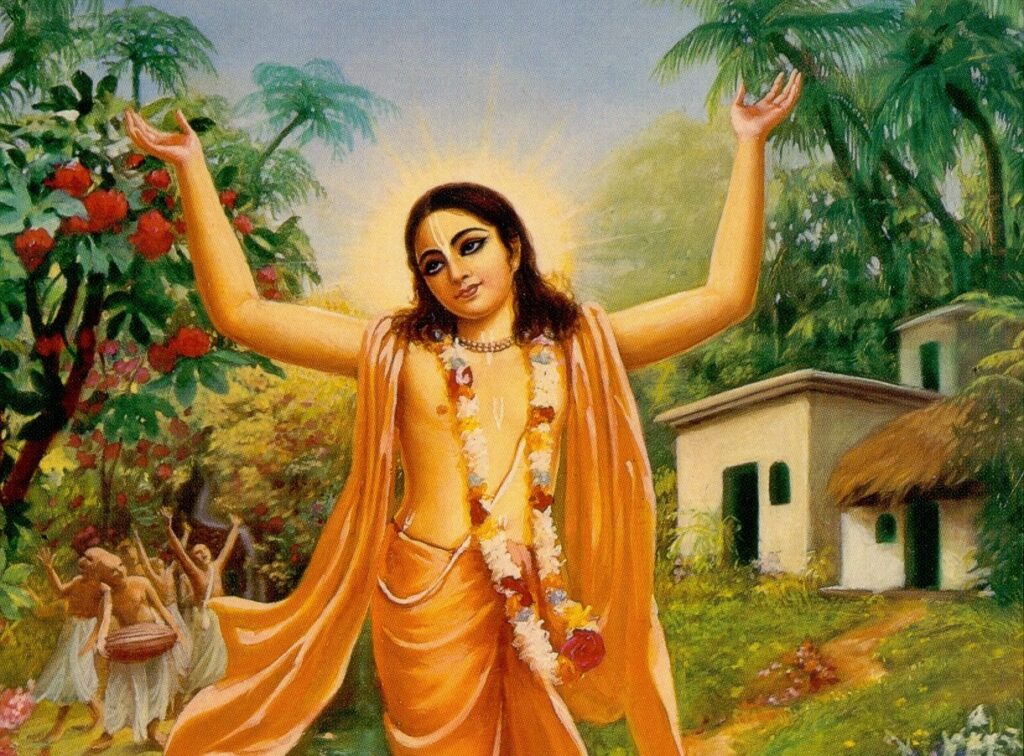
O Lord! O sovereign of the Vaishnavas! Through your devotion you have overcome even the heavens. I constantly venerate the most pious line of Bhaktivinoda Thakur which has developed from your body and works.
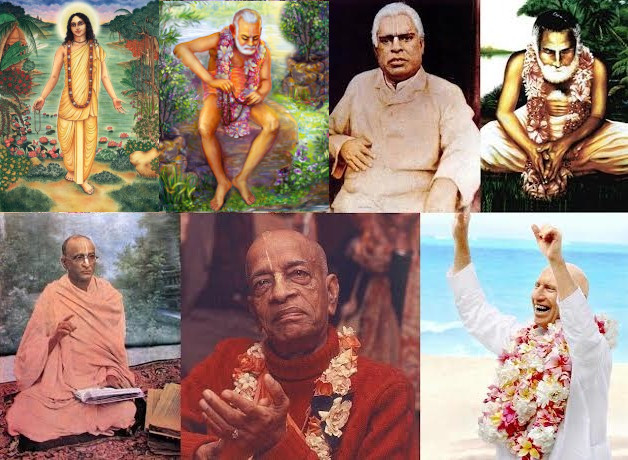

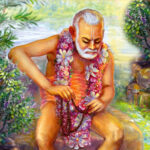
Leave A Reply